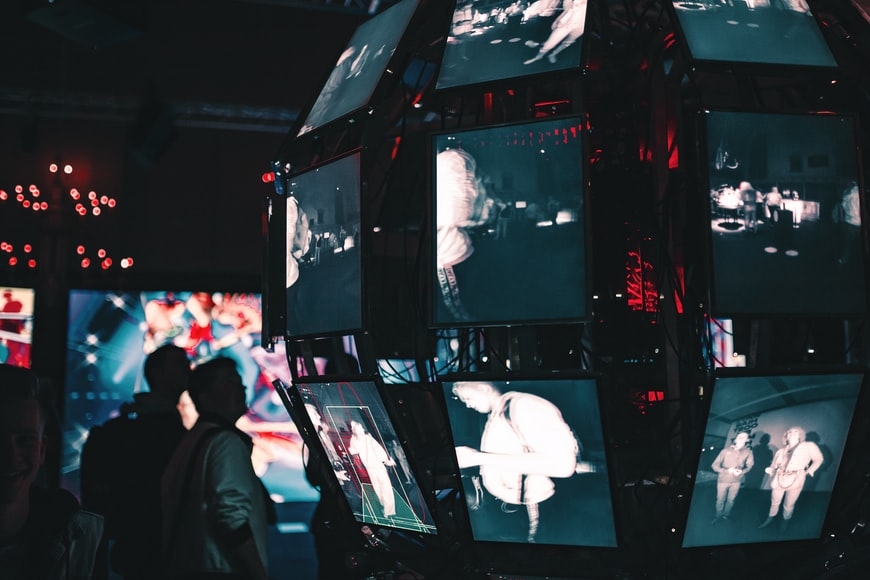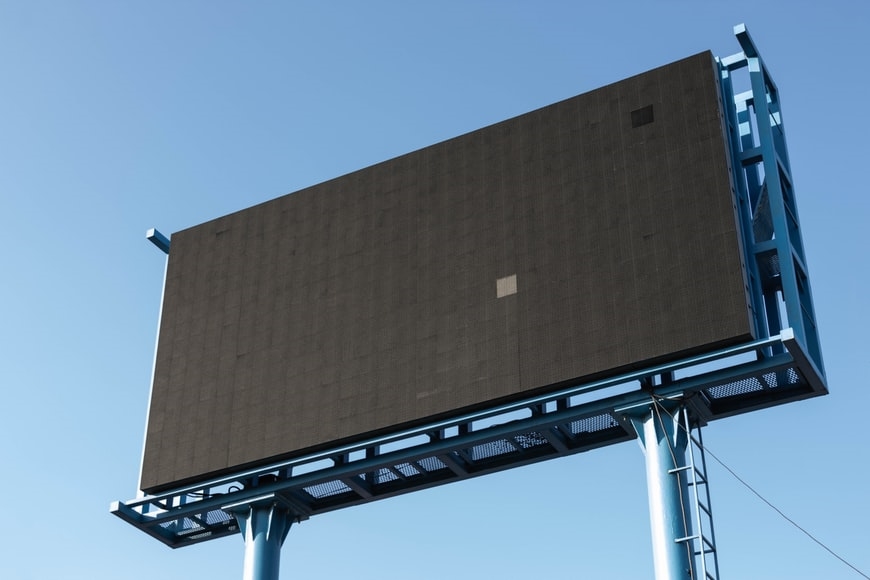Video walls are at the forefront of IT and have truly revolutionized how we produce our AV projects. But how do they work, and where can we use them?
Well, that’s where we come in. At DEXON, we know how important it is to fully understand the facts before you invest in a product. That’s why we’ve compiled this guide to video wall technology, with a comprehensive guide to its working methods and recommended usage.
So, whether you’re a total tech know-it-all or you can barely operate your smartphone, we’ve got you covered.
Let’s go!
What is a video wall?
Before we get too excited, it’s important to first lay out the facts. A video wall consists of multiple monitors put together to produce one or multiple coherent images. Video walls connect to an external processor to display a variety of content that can be either isolated or blended together.
The resolution of a video wall is the sum total of the individual monitor’s resolution.
Video walls can vary in size, quality and sophistication depending on the user requirements.
How do they work?
To help you get started on your video wall journey, here’s a guide to all the systems that work behind the scenes of a video wall production:
Video wall controllers
Video wall controllers process input signals from single or multiple sources to then display the content on a video wall. Processors make it possible for users to isolate information and optimize their video wall experience. Processors can display input videos on different output windows that can be placed to any position and in any size over the video wall. Without a processor, it may be difficult to perform sophisticated functions that contribute to high-quality production.
We can say that controlling multi screens is not an easy task. This is why you need professional equipment to make these systems work the way you want them to work.

Matrix switchers
Matrix switchers are a lot like processors but they can display input video content over a single monitor only. They can operate as simultaneously switching and displaying one or multiple inputs over multiple outputs parallel.
There are demanding matrices also that can incorporate seamless switching between sources, fading in and out and scaling up and down. Matrix switchers are great for those of you who are feeling adventurous enough to produce a professional quality project.
LCD
LCD video walls are typically the most popular option for easily accessible video walls. This simple technology consists of multiple panels of LCD screens that produce a relatively high-quality image. The low up-front cost makes it a popular choice for projects on a budget, but it’s important to note that LCD screens typically have a high running cost due to energy inefficiency.
The bezels, or borders, around the screens also cause an interruption in the image quality, but most high-quality video processors can mitigate this.
Rear projected cubes
Rear projected cubes produce an uninterrupted display that provide that festival feeling. This video wall option integrates its functions meaning it is reliable and high-performance, suited to producing high-quality pictures for demanding projects. This video wall can be found in broadcasting studios, control rooms and security facilities. Rear projected cubes provide 24/7 operation with no burning-in effects so serve really professional applications.
LED walls
LED walls are a popular choice for large displays that require high-quality and bright images. These walls are most suited to displaying highly detailed images in museums or billboards, where catching the eye of the view is all that matters!
Recommended uses
How you choose to use your video wall is entirely up to you, but you can consider the following few ideas to get the most out of your video wall technology:
Business
Video walls are extremely useful for business settings. With a video wall, you can distribute all your crucial information from a single source, meaning that everyone on an office floor receives their critical data in a clear format directly from a reliable source.
This means you’ll no longer have to rely on flooding email inboxes or relying on word of mouth to carry vital business throughout your office.
Video walls can also be used for conference calling, creating an interactive experience that unites both in-person and virtual attendees.
Entertainment
Ever wondered how those in the back rows of sports stadiums can see what’s happening courtside? Well, video wall technology can explain that! With video walls, we can stream footage from remote cameras and display them with effects to give everyone that front row experience.
Video walls can be used in entertainment venues such as arenas, music festivals, cinemas and nightclubs.
Education
We know that lectures can sometimes put us to sleep and there’s no shame in it, especially when it feels like hours of endless slides.
With video walls, educational institutions have the opportunity to revitalize their teaching by creating interactive video wall content with effects and isolated screens. With this, students can receive all the necessary information in a digestible and engaging format that is bound to keep everyone awake!
Using video walls in reception areas is also a great way to distribute key information regarding student experiences such as school events or upcoming exam dates.
Surveillance
Need a mission control room? No problem. With video walls, you can use a processor to connect to all your surveillance equipment. Your processor can then display this content in any format across your video wall, giving you uninterrupted footage of all your vulnerable points in your home and business.
Not only will you look like you’re living in a spy thriller, but you’ll also stay one step ahead of crime at all times.
Benefits of video walls
If we haven’t convinced you so far, fear not, because we’ve compiled a comprehensive list of benefits to using video walls:
Looks impressive
Let’s not be modest, we know how important it is to look impressive. In fact, looking impressive can help a business meet some key developmental goals!
When a client or investor walks into your office and sees a video wall, they’re bound to be impressed by a company that takes communication and engagement so seriously. Using video walls also places you at the forefront of information technology, profiling your business as a forward thinking and futuristic institution.
With a video wall, you’re bound to bring in some interested parties.
Multi-functional
Need a video wall to broadcast this month’s sales projections to the whole office but also have an important conference that all the office needs to attend at the same time? You’re covered.
Video walls can cover all your basic business needs by connecting to a controller and broadcasting all necessary information whilst also streaming web-based content and conference calling! This means you can isolate different screens to present specific information. With video walls, you can truly be in two places at once.
Better communication
We all know how frustrating poor communication is at work, but with video walls, miscommunication is a thing of the past. With a video wall, you can centralize your flow of information and get rid of the need for hearsay or emails!
When everyone receives the same information, in an identical format, at the same time, confusion disappears to make way for clear and concise information.
Now, you don’t need to worry about sending a wave of emails to everyone’s inbox on the latest company announcements, you can send a quick and simple message to your video and let technology do the talking.
Customizable
Are you worried that you won’t have enough room for a giant video wall but you still want one? Don’t worry, because you can design your video wall based on your size constraints!
Video wall technology is entirely customizable, meaning that you can tailor your system to your specific video wall requirements, so you don’t have to worry about managing systems or paying for an expensive kit for the sake of it!
Having a customisable system also means that you can get the best out of your video wall without running into bumps along the way.
How to select the best video wall
The beauty of video wall technology is that your experience is totally defined by the uses, meaning there is no right or wrong wall. The best way to select your video wall is based on what the user requires.
To do this, consider how you intend to use the video wall, as this can help inform your decision on the systems you require. For example, if you have a particularly demanding project that requires high-speed professional-quality performance, you’ll probably benefit from a controller, switcher and a high-quality video wall.
If, however, you intend to use your video wall for simple actions, then chances are you’re not going to need a lot of hardware to accompany your wall.
In other words, if you don’t need it, don’t buy it! No fads, no fuss, just plain practicality.
The other thing that you should consider is your own technical ability. If you’re a tech wizard, then you should have a pretty easy time trying to navigate a video wall system, but if you’re not, don’t panic! Consider equipment that you can easily operate before investing in a more extensive setup. By doing this, you can optimize your video wall experience and minimize the impact of fault.










Add Comment